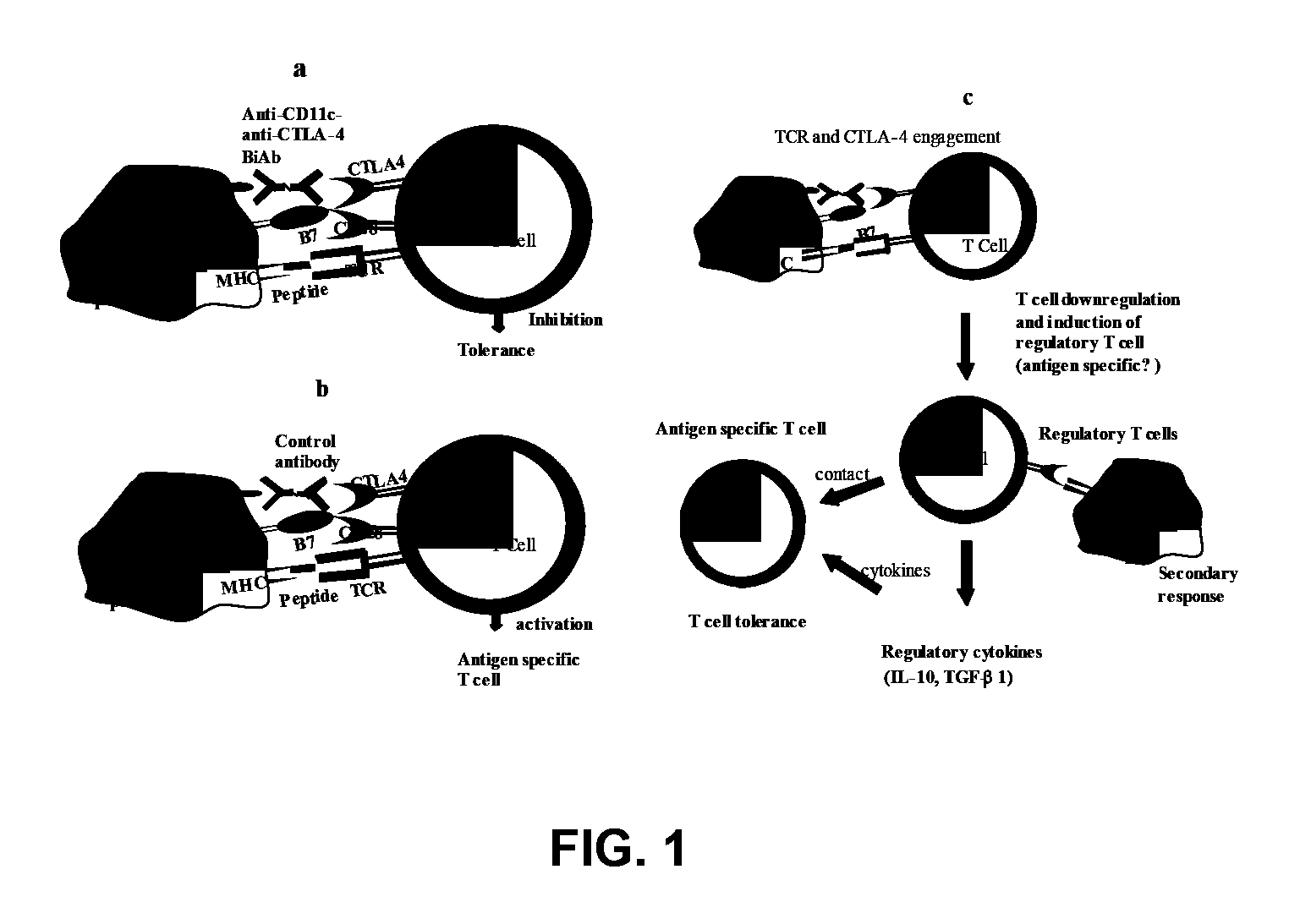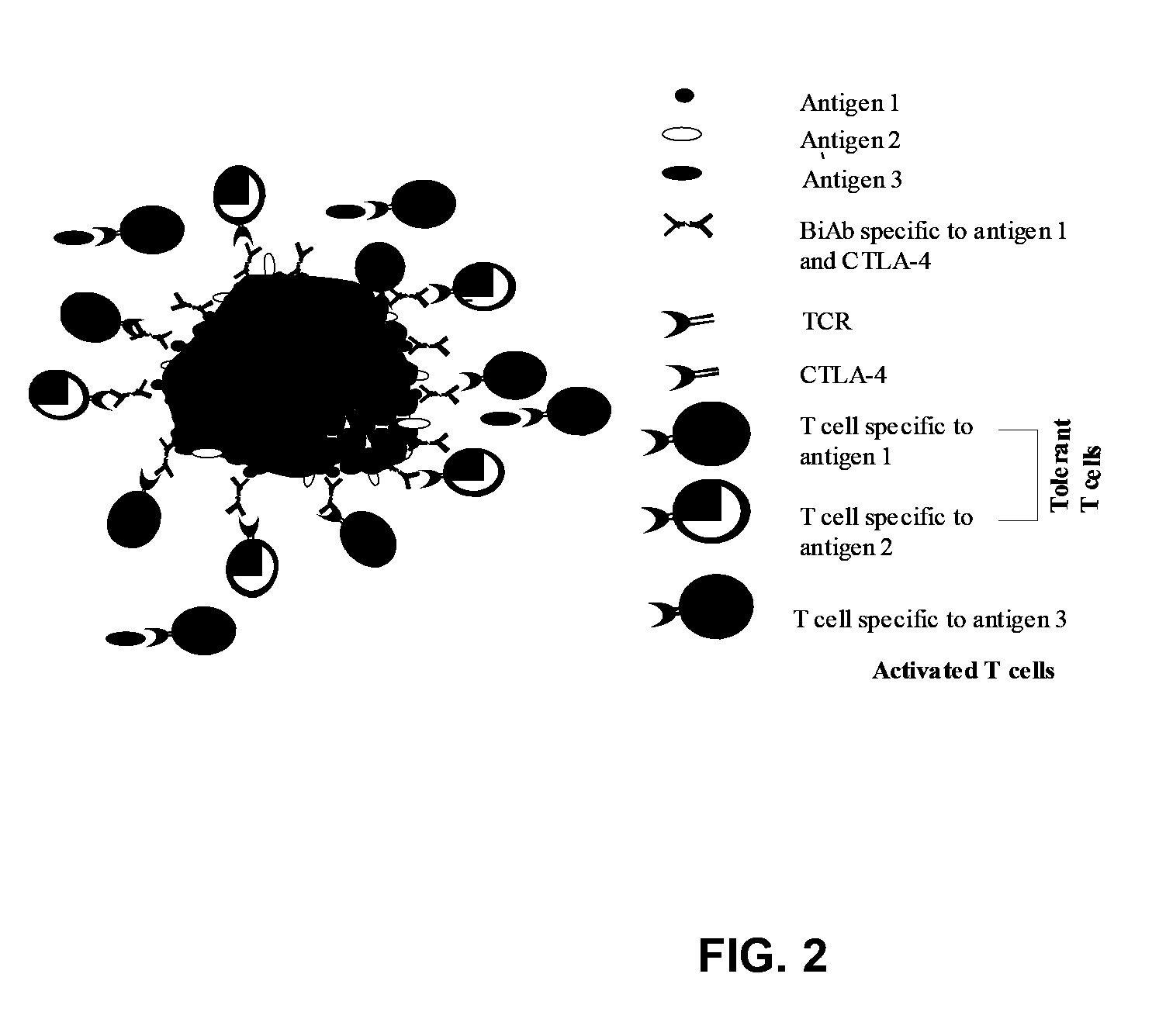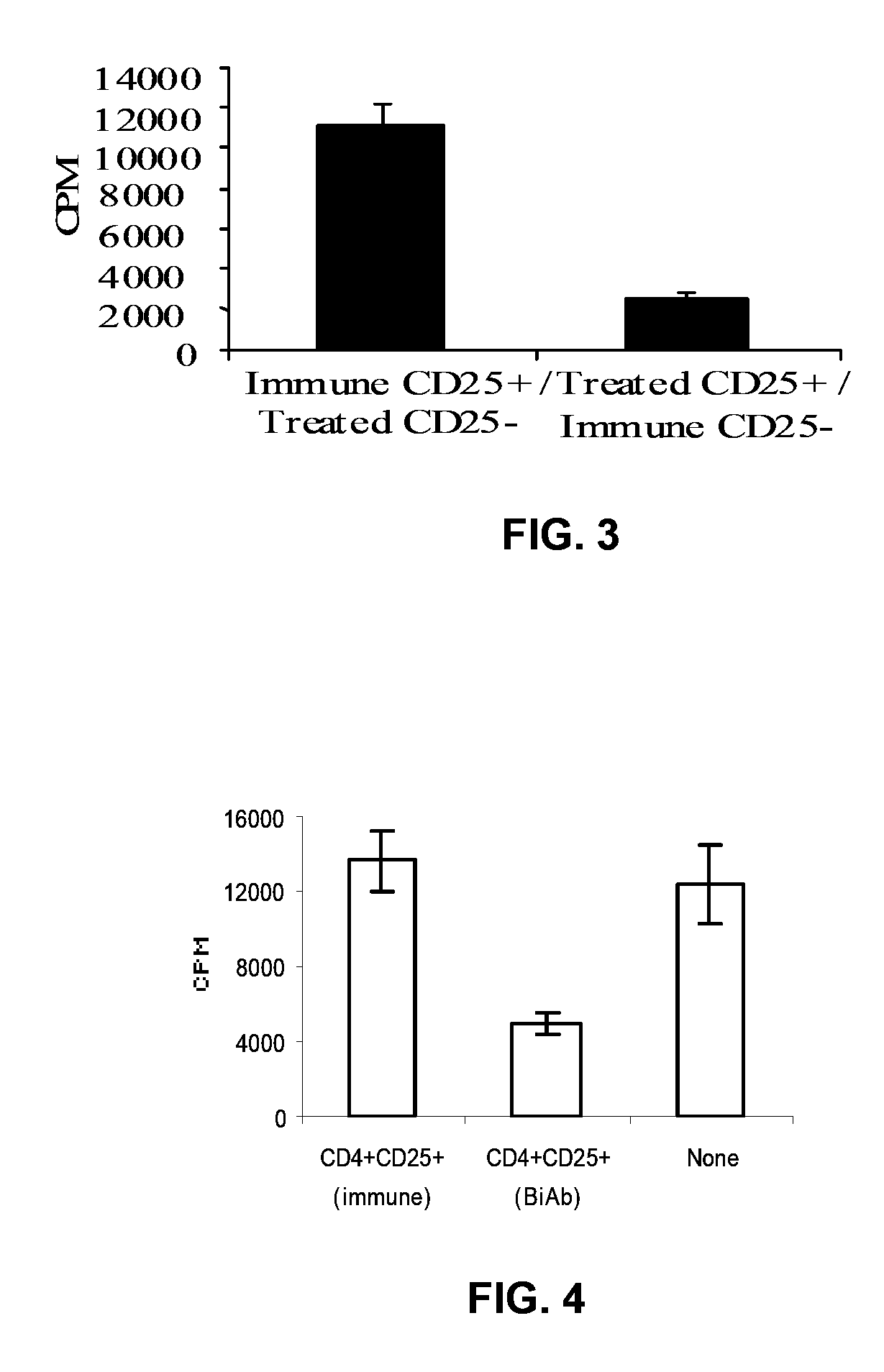Uses of bispecific antibody coated dendritic cells pulsed with antigens and gm-CSF in immune regulation
a technology of immune regulation and bispecific antibody, which is applied in the direction of immunology, metabolism disorder, drug composition, etc., can solve the problems of t-cell attack becoming a problem, body being susceptible to attack by bacterial, viral, fungal organisms, etc., and achieves the effect of suppressing immune responses and increasing the proportion of dendritic cell precursors
- Summary
- Abstract
- Description
- Claims
- Application Information
AI Technical Summary
Problems solved by technology
Method used
Image
Examples
example 1
Induction of Immune Tolerance and Regulatory T Cells Using Anti-CTLA-4 Antibody Coated DCs.
[0106] A novel approach to overcome the limitation (the requirement for tissue specific antibodies) of a tissue targeted CTLA-4 engagement strategy and to induce a robust Treg cell response in an antigen specific fashion uses anti-CTLA-4 antibody
[0107] Tolerance induction by DC coated with anti-CD11c-anti-CTLA-4 Biab were analyzed. Mice were immunized with ovalbumin (ova) or thyroglobulin (Tg) on day 0. These mice were administered (i.v.) with respective antigen (ova or Tg) pulsed DC coated with isotype control BiAb (ova+DC or Tg+DC) or anti-CD11 c-anti-CTLA4 BiAb (ova+DC+biAB or Tg+DC+BiAb) on day 8. Spleen cells were collected from these mice on day 20 and were tested for their T Cell proliferative IL-2, IL-10 and TGFbeta 1 responses. Resting cells collected from these mice were stained with FITC conjugated mouse CD4 antibody and PE-labeled anti mouse CD25 antibody. CD4+ cell population w...
example 2
Tissue Specific Tolerance Induction through CTLA-4 Engagement Using a Bispecific Antibody (FIG. 2)
[0114] The therapeutic potential of CTLA-4 engagement using a bispecific antibody to induce tissue-specific tolerance was investigated by using an anti-CTLA-4 antibody that was coupled to an antibody specific for the thyrotropin receptor. After in vivo administration, this bispecific antibody (BiAb) accumulated in the thyroid and prevented development of experimental autoimmune thyroiditis (EAT) in mice immunized with mouse thyroglobulin (mTg). Lymphocytes from BiAb-treated mice showed a significant reduction in their ability to proliferate, and to produce IL-2, IFN-γ and tumor necrosis factor (TNF)-α, in response to mTg re-stimulation compared to lymphocytes from untreated mice. Moreover, BiAb-treated mice showed suppressed anti-mTg antibody response, lymphocytic infiltration of the thyroid and follicular destruction. The BiAb targeted to the thyroid most likely facilitated engagemen...
example 3
T Cell Tolerance is Induced upon Targeted CTLA-4 Engagement
[0119] To further characterize the immunosuppression induced through the BiAb therapy, control antibody or CTLA4 antibody coated allogenic mM12 cells were injected into CBA / J mice. Mice in one group (BiAb treated group 2) received anti-CTLA-4 coated mM12 cells only during the challenge immunization to test if the T cell response can be controlled during the secondary immune response. As shown in FIG. 10, spleen cells from mice immunized with control antibody coated mM12 cells showed strong T cell proliferative, IL-2 and IFN-γ responses upon ex vivo restimulation with mM12 cells, but mice immunized both times with anti-CTLA-4 antibody coated mM12 cells or only during the second immunization showed significantly reduced T cell proliferation, IL-2 and IFN-γ responses. The alloimmune suppression induced upon CTLA-4 engagement was associated with increased production of IL-4, IL-10 and TGF-β1 (FIG. 10b). Spleen cells from mice ...
PUM
| Property | Measurement | Unit |
|---|---|---|
| volume | aaaaa | aaaaa |
| pH | aaaaa | aaaaa |
| temperature | aaaaa | aaaaa |
Abstract
Description
Claims
Application Information
 Login to View More
Login to View More - R&D
- Intellectual Property
- Life Sciences
- Materials
- Tech Scout
- Unparalleled Data Quality
- Higher Quality Content
- 60% Fewer Hallucinations
Browse by: Latest US Patents, China's latest patents, Technical Efficacy Thesaurus, Application Domain, Technology Topic, Popular Technical Reports.
© 2025 PatSnap. All rights reserved.Legal|Privacy policy|Modern Slavery Act Transparency Statement|Sitemap|About US| Contact US: help@patsnap.com



